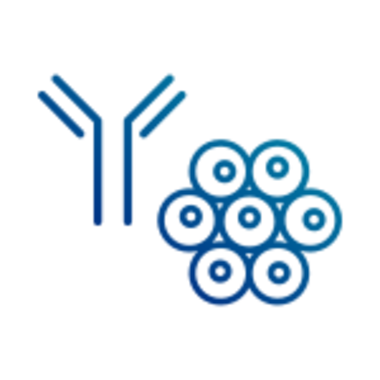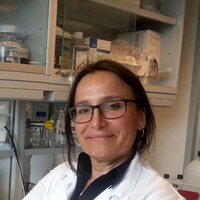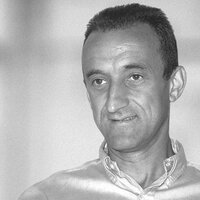Bringing Immuno-Oncology Into Focus
Advanta IO Gene Expression Assay and Workflow
Tumor gene expression has proven to be an effective measure of immune response in cancer progression and therapeutic response research. As emerging therapies reveal new biomarkers and expand the need for samples, the costs and labor required to complete this important work increase. The Advanta™ IO Gene Expression Assay, used with the Biomark™ HD system, provides a sensitive and cost-effective toolset for identifying gene expression signatures from immune and cancer cells.

A powerful immuno-oncology focused assay
The Advanta IO Gene Expression Assay was developed in collaboration with leading researchers in the biopharmaceutical industry to provide the optimal balance of biomarker breadth, assay flexibility and workflow efficiency.
The panel consists of 170 genes, including 91 reported in Nature, where Roy Herbst et al. defined a gene set representing tumor and immune response. The panel includes markers for:
- Immune cell identification
- Immune and cancer cell function
- Immune regulation and cell fate
- Checkpoint therapy response
Optimized for formalin-fixed, paraffin-embedded and fresh frozen tumor samples, the Advanta IO Gene Expression Assay uses TaqMan® chemistry to sensitively measure gene expression, with five reference genes serving as analysis controls. Combined with Standard BioTools™ microfluidics technology, the assay offers significant workflow efficiencies over traditional gene expression profiling methods. Each reaction is miniaturized to nanoliter volume and controlled using precise automation to facilitate qPCR analysis across a large dynamic range. With assay introduction into the integrated fluidic circuit (IFC) under user control, researchers have the flexibility to add up to 17 new assays or exchange gene assays within the panel to achieve experimental goals without compromise.
Download the flyer to learn more about the Advanta IO Gene Expression Assay workflow using the Biomark HD system, and to see the list of gene expression targets covered in the assay.
Sample case study
In a 2016 paper published by The Lancet for the POPLAR study, “Atezolizumab versus docetaxel for patients with previously treated non-small-cell lung cancer,” Louis Fehrenbacher et al. used immunohistochemistry, and also ran a gene expression panel of 91 genes featured in the Herbst paper. These genes are included in the Advanta IO Gene Expression Assay.
The team subsequently used these research results to develop a gene signature based on a subset of the panel, that provided data that could potentially be used for developing future diagnostics tests.
CUSTOMER STORIES
Learn more about how our customers are leveraging Standard BioTools technology
Yongpan Yan, PhD

An approach that combines molecular biology, immunology and cell biology tools to uniquely
Febe van Maldegem, PhD, and Karishma Valand

Imaging the dramatic remodeling of the lung tumor microenvironment
Melissa Davis, PhD

Defining spatial characteristics using Imaging Mass Cytometry
Rebecca Ihrie, PhD

How CyTOF technology enabled a look into the heterogeneity of glioblastoma.
Bernd Bodenmiller, PhD

Bernd Bodenmiller on revealing new insights into tumors with Imaging Mass Cytometry
David L. Rimm, MD, PhD

David Rimm on the value of Imaging Mass Cytometry for immunology applications at Yale
Sonia Gavasso, PhD

Sonia Gavasso on the potential for mass cytometry to improve immunotherapy
Sean Bendall, PhD

In the Field: How Sean Bendall is advancing Stanford proteomics research
Ansuman Satpathy, MD, PhD

Stanford’s Ansu Satpathy designed single-cell T-ATAC-seq, now available at Script Hub
Evan Newell, PhD

Evan Newell on decoding immune cell heterogeneity with mass cytometry
Akil Merchant, MD

Hear how researchers are using Imaging Mass Cytometry.
Wendy Fantl, PhD

On the right path to better ovarian cancer diagnosis and treatment
Corinne Ramos, PhD, MBA

Advancing drug development with molecular imaging
Shyam Prabhakar, PhD

Analysis of Single-Cell Transcriptomes in Colorectal Cancer by Shyam Prabhakar
Hartland Jackson, PhD

Entering an era of new biology
Daniel Schulz, PhD

Discovering a chemokine’s purpose in fighting tumors using RNA and protein co-detection
Taylor Witte, BS

Rapid-fire Q&A: We give you a topic, you tell us what’s on your mind.
Chad Stevens, MS

Rapid-fire Q&A: We give you a topic, you tell us what’s on your mind.
Zinaida Good, PhD

Finding biomarkers for toxicity and progression in lymphoma using CyTOF® flow cytometry
Jana Fischer, PhD

Paving a new road for spatial biology in precision medicine
Dr. Dexi Chen, PhD, MD

Achieving multi-omic insights with microfluidics and CyTOF technology
Scott Magness, PhD

Investigating transcriptomic changes at the microscale level
Dr. Luc Teyton, MD, PhD

How one lab explores the immune system one T cell at a time
Jo Vandesompele, PhD

Jo Vandesompele at Ghent University discusses a deep dive into single-cell sequencing
Christophe Lancrin, PhD

Christophe Lancrin on revealing new transcription factors using C1 and Biomark
Shyam Prabhakar, PhD

Shyam Prabhakar explores signatures of patient survival and EMT in colorectal tumors
Simone Mayer, PhD

Simone Mayer, PhD, explains how using multimodal analysis helped reveal new insights
Kelly Nudelman, PhD

Kelly Nudelman and Tae-Hwi Schwantes-An discuss sample identification
Jonathan M. Irish, PhD

Combinatorial, single-cell approaches to explore the complexity of biologic systems
Scientist Michael Stubbington, PhD

A new single-cell sequencing tool brings fresh insight to functional T cell studies
Leisha McGrath, PhD student

A microfluidics-based gene expression assay to monitor fish health
Nicole Bakkegård Goecke, PhD

Nicole Bakkegård Goecke, PhD, discusses detecting and preventing disease in animals
For Research Use Only. Not for use in diagnostic procedures. Patent and License Information: www.standardbio.com/legal/notices. Trademarks: www.standardbio.com/legal/trademarks. Any other trademarks are the sole property of their respective owners. ©2025 Standard BioTools Inc. All rights reserved.
